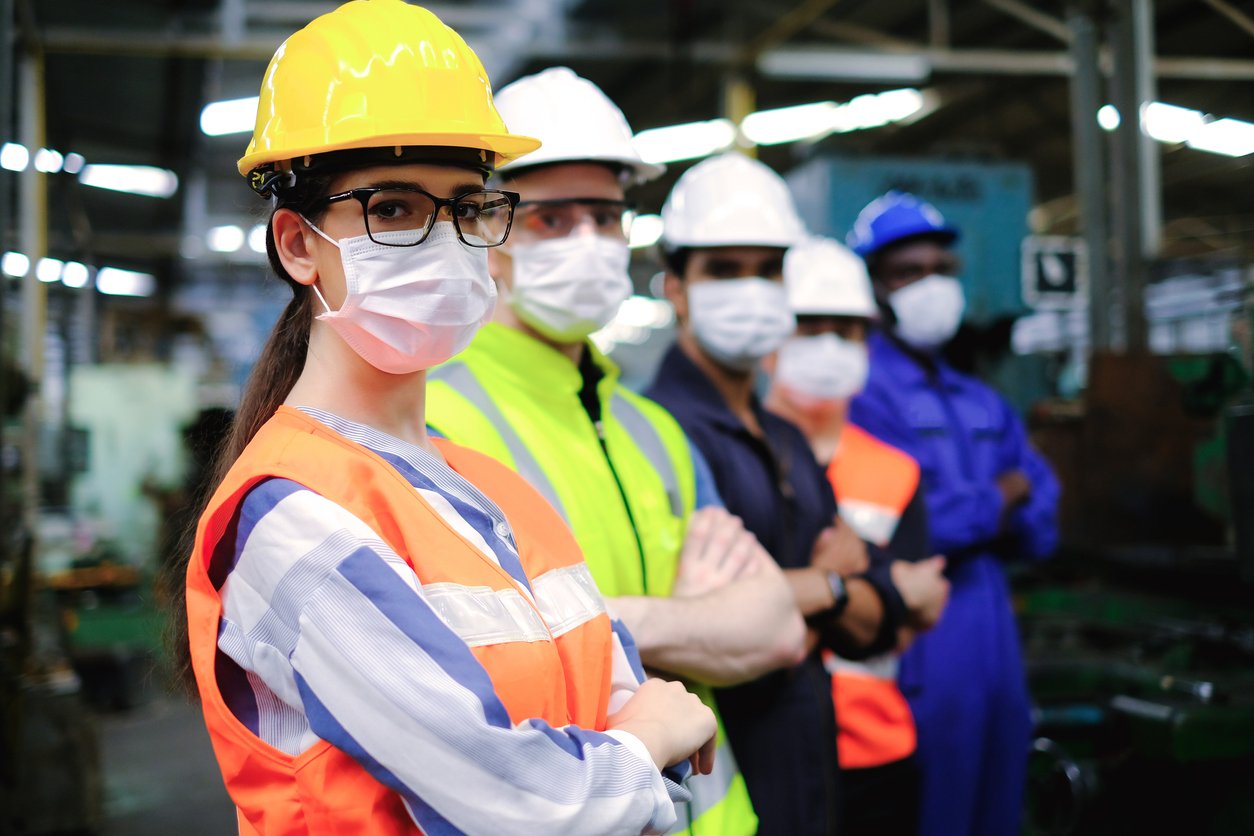Updated December 2025
If you’re concerned about the planet but want a career outside of environmental sciences and engineering, you’re in luck.
Many people think of green jobs as those that are directly linked to preserving natural resources or fighting climate change, like ecologist and solar engineer. But the truth is that there are all kinds of non-STEM careers that support environmental well-being.
In this blog, we explore six non-traditional career paths in sustainability you might want to consider. See how they contribute to a cleaner, greener world and learn about the challenges and rewards go along with them.
TABLE OF CONTENTS
- The Significance of Sustainability
- Non-Traditional Careers in Sustainability
- Challenges and Rewards of Sustainable Careers
- Future Trends in Sustainable Employment
THE SIGNIFICANCE OF SUSTAINABILITY
Environmental sustainability is crucial in today's world because it ensures the preservation of our planet's natural resources and ecosystems for current and future generations.
With escalating environmental challenges such as climate change, pollution, habitat destruction, and loss of biodiversity, it’s more important than ever to embrace sustainable practices so we can maintain a habitable and thriving environment. That means using resources responsibly, reducing waste and pollution, and being conscious of our carbon footprint.
But sustainability goes beyond environmental considerations. There are social and economic dimensions as well. For instance, social sustainability involves making sure everyone has a safe and secure working environment. And economic sustainability is about promoting development and growth without compromising the ability of future generations to meet their own needs.
By prioritizing sustainability, we can safeguard the health of both humans and ecosystems, protect vulnerable species, and mitigate the impacts of climate change.
Ultimately, it’s about creating a more equitable, prosperous, and resilient future for everyone.
NON-TRADITIONAL CAREERS IN SUSTAINABILITY
So what are some less-commonly-known sustainability career paths? Here are six top options:
Architectural Design
Architectural design is the first eco-friendly profession on our list. Designers who focus on green buildings produce structures that are both environmentally responsible and economically viable.
For instance, sustainable architectural designers prioritize energy efficiency by incorporating passive design strategies, such as orienting the building to make the best use of the sun for heat and the wind for natural ventilation. They also specify things like high-performance windows and green roofs that use vegetation as a natural temperature moderator.
 Green roofs absorb heat and lower the energy needed to heat or cool a building
Green roofs absorb heat and lower the energy needed to heat or cool a building
The idea is to optimize building envelope design to minimize heat gain and loss. That reduces the need for mechanical heating and cooling systems and lowers energy consumption throughout the building’s lifecycle.
People in this green building career seek to use materials with lower environmental impact, such as those that are recycled, reclaimed, or locally sourced. They look for durable materials with a longer lifespan that come from renewable sources and don’t have to be shipped great distances. They also consider whether materials can be reused without causing harmful pollution.
Interior Design
Interior design also presents eco-conscious job opportunities. By prioritizing environmental responsibility and occupant well-being, interior designers can create healthier and more sustainable built environments.
This starts with making the most efficient use of space. Sustainable interior designers look for ways to design spaces that are flexible and can serve multiple purposes, reducing the need for renovations or remodels as occupants’ needs change. Think wall beds, modular flooring, ottoman cubes, and room dividers.
A major component of this sustainable living occupation is selecting eco-friendly and energy-efficient materials. That includes things like:
- Bamboo flooring
- Recycled glass countertops
- Reclaimed wood furniture
- Smart thermostats
- Window coverings that provide good insulation
- Low-flow faucets and toilets
- ENERGY STAR-rated appliances
Designers consider the environmental impact of materials throughout their entire lifecycle, from extraction to disposal.
 This wall paneling is made entirely from sunflower bio-waste (Image source: dezeen.com)
This wall paneling is made entirely from sunflower bio-waste (Image source: dezeen.com)
Interior designers can also improve a building’s indoor air quality by choosing furnishings, textiles, and finishes that have low emissions of VOCs (volatile organic compounds) and incorporating natural air filters like plants or carpets.
Gas Technician
Interested in renewable energy jobs? Gas technicians ensure the safe and efficient use of gas energy while also facilitating the transition to renewable and low-carbon alternatives.
These technicians ensure that gas appliances and systems are installed correctly and maintained properly. That leads to increased energy efficiency, which translates into lower greenhouse gas emissions and reduced energy consumption.
Gas technicians also advise consumers and businesses on upgrading to more efficient equipment, such as high-efficiency furnaces, boilers, and water heaters.
While conventional natural gas is a fossil fuel, the world is increasingly embracing renewable natural gas (RNG). RNG is produced from organic landfill waste, agricultural waste, and wastewater treatment waste. It’s a low-carbon alternative that reduces greenhouse gas emissions.
Natural gas utilities in Canada have pledged to use 10 per cent RNG by 2030. The reduced emissions would be like getting 5.2 million cars off the road!
Gas technicians can facilitate the transition to these renewable energy sources by ensuring their safe and efficient operation.
Occupational Health and Safety
Occupational health and safety (OHS) is another sustainable career that contributes to the long-term well-being of both workers and the planet.
OHS officers are responsible for identifying and mitigating workplace hazards (including chemicals and pathogens) to help ensure that workers are safe and healthy while performing their duties. By implementing safety protocols, providing training, and conducting regular inspections, they help reduce the number of workplace accidents and injuries and contribute to environmental sustainability.
 OHS professionals help protect people and the planet
OHS professionals help protect people and the planet
OHS officers also assess workplace activities and processes to identify potential environmental risks, such as chemical spills, emissions, or improper waste disposal. They enforce rules around the use, storage, and disposal of hazardous substances. It’s a proactive environmental planning role that helps prevent pollution and ecosystem damage.
These professionals also promote the use of environmentally friendly practices and materials, contributing to sustainability efforts within the organization.
Supply Chain Management
Supply chain managers oversee the entire process of sourcing, manufacturing, and delivering goods or services to customers. And given that 90 per cent of most consumer companies’ environmental impact stems from their supply chains, these professionals have a significant role to play in sustainability.
While supply chain managers seek to minimize costs and maximize efficiency, they also focus on integrating environmental and social considerations into supply chain operations. They do this by:
- Evaluating and selecting suppliers based on their environmental and social responsibility practices
- Ensuring that raw materials and components are sourced ethically
- Consolidating shipments and using fuel-efficient modes of transportation to reduce the supply chain’s carbon footprint
- Choosing recyclable, biodegradable, or reusable packaging solutions
- Managing inventory levels to avoid overproduction
By collaborating with suppliers, manufacturers, and distributors, supply chain professionals can implement sustainable practices and address issues such as resource depletion, waste generation, and human rights violations.
Plumbing
Because plumbers are on the front lines of water conservation, they also make our list of responsible resource management jobs.
Green plumbing techniques include installing water-efficient fixtures like low-flow toilets, faucets, and showerheads. The U.S. Environmental Protection Agency estimates that switching to WaterSense-approved toilets can cut annual water use by 13,000 gallons (over 49,000 litres) for the average household.
 Water-saving toilets can make a huge difference
Water-saving toilets can make a huge difference
Plumbers can also install greywater recycling systems, which capture and treat used water from sinks, showers, and laundry for reuse in things like lawn irrigation and toilet flushing.
And finally, plumbers also have a role in reducing energy consumption. For instance, conventional water heaters waste a lot of energy heating a tank full of water. But with tankless water heaters, a small heating unit is installed close to wherever hot water is needed (like a sink or shower) and the water is heated on demand rather than stored in large tanks.
CHALLENGES AND REWARDS OF SUSTAINABLE CAREERS
Careers in sustainability come with both challenges and rewards.
The most obvious reward is having the opportunity to make a tangible difference in addressing pressing global issues like climate change and resource depletion. Contributing to sustainability initiatives can provide a real sense of purpose and fulfilment in your work.
Plus, sustainability careers are increasingly in demand across many different industries. A LinkedIn report found that demand for green talent (defined as people with skills directly related to combating climate change or roles focused on sustainability) grew by 11.6 per cent between 2023 and 2024.
However, there are challenges too. Sustainability professionals often face competing priorities and objectives, balancing environmental, social, and economic considerations. It can be difficult to communicate the value of sustainability initiatives and get support for your proposals.
In addition, sustainable careers often involve working in emerging or rapidly evolving industries, where regulations, technologies, and market trends can change quickly. It’s important to get proper training and keep up to date with developments in sustainability practices.
FUTURE TRENDS IN SUSTAINABLE EMPLOYMENT
The demand for workers with skills in sustainability is expected to keep rising over the coming years. The LinkedIn report predicts that by 2030, one in five jobs will lack the green talent required.
And according to Eco Canada, environmental employment in this country will grow by eight per cent by 2029. In total, more than 233,000 environmentally related jobs will need to be filled.
START PREPARING FOR A CAREER IN SUSTAINABILITY
Herzing College offers a wide variety of programs that can get you job-ready in two years or even less. Our sustainable architecture, interior design, occupational health and safety, and supply chain management programs are delivered online, while our skilled trades training takes place in our state-of-the-art workshop facilities.
Click below to learn more about our programs and chat with a friendly admissions advisor who can answer any questions you have.













